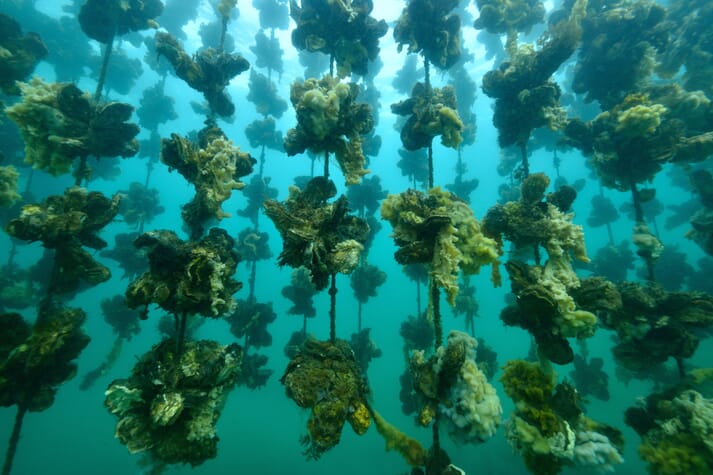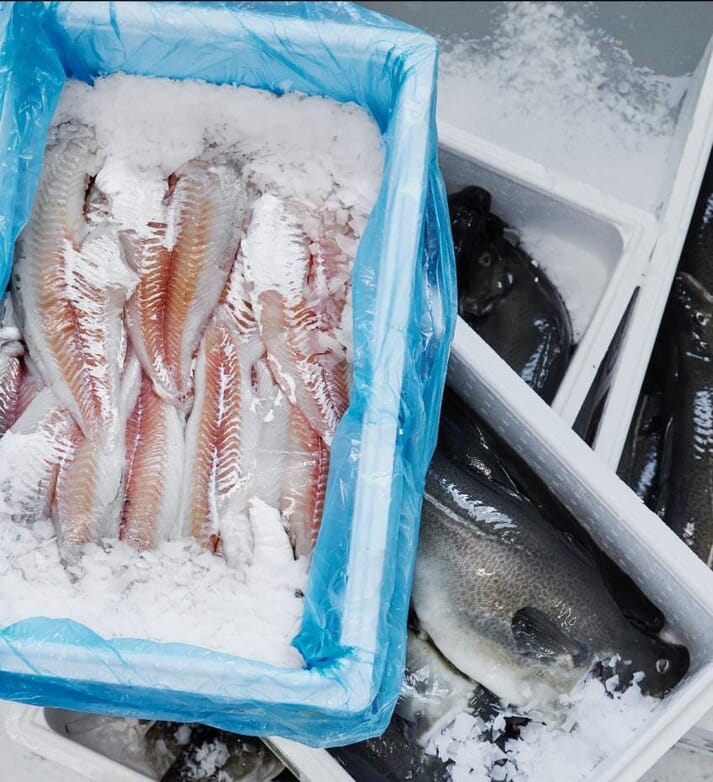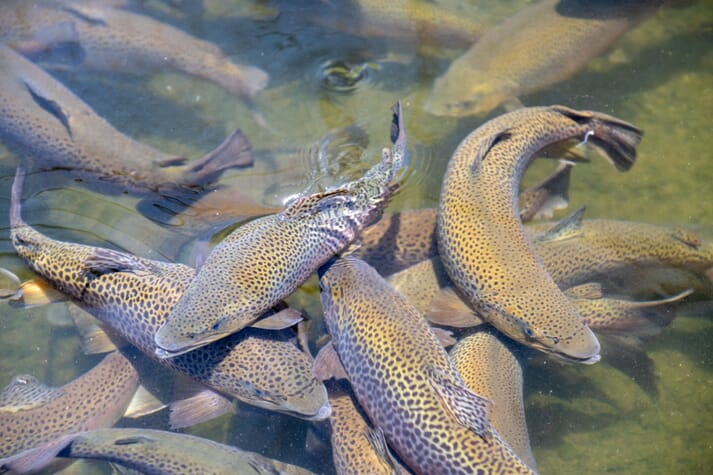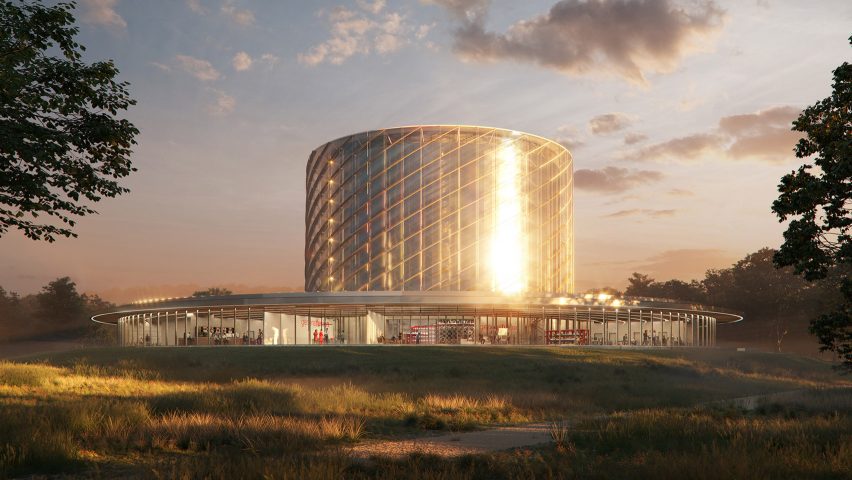SUSTAINABILITY
Germany is fully committed to hydrogen, and the Netherlands should follow suit
How is our hydrogen society and economy faring? In the summer series 'The Netherlands, hydrogen land' we discuss the current state of affairs with technicians and scientists.
28 August 2021
The Dutch government has great ambitions for hydrogen. The National Hydrogen Program demonstrates that the government wants to go all-out for hydrogen as the energy system of the future. But how is our hydrogen society and economy faring? In the summer series ‘The Netherlands, Hydrogen Land’, we discuss the current state of affairs with technicians and scientists on the basis of themes from the National Hydrogen Programme. In the fifth installment: The cooperation between the Netherlands and Germany.
The National Hydrogen Program
At the beginning of July, the National Hydrogen Program (NWP) was presented to the Secretary of State by the cross-sectoral working group hydrogen (CSWW). CSWW is a collaboration between 19 organizations. The program stems from the government’s National Climate Agreement. The cabinet’s vision for hydrogen contains the policy agenda in which the central government’s commitment is laid out further. The period up to and including 2021 is the preparatory phase for the actual scaling up and roll-out of hydrogen from 2022 onwards. The second phase of the NWP – which is actually the real start – Is set to commence on 1 January 2022.
While the Netherlands announced its hydrogen strategy last month, Germany had already done so a year earlier. Our neighboring country has set aside nine billion euros to build a hydrogen infrastructure with a capacity of five gigawatts over the next ten years. To help paint a picture of this, that corresponds to the capacity of ten nuclear power plants. The hydrogen strategy of the industrial state of North Rhine-Westphalia specifies that the region plans to import half of its hydrogen from the Netherlands. Cooperation between the Netherlands and Germany in the field of hydrogen is therefore inevitable..
So far Germany is the only country that the Netherlands has entered into a concrete bilateral cooperation with. And that while the NWP is clear in stating that hydrogen is an international theme – the international strategy is part of the Dutch approach and the Netherlands is participating in a number of international projects. However, the NWP is not much more specific on this subject than ‘consultations are being held with other member states‘. Bilateral cooperation with countries such as Belgium, France and Norway is still in an ‘exploratory phase‘.
Bilateral cooperation
Hydrogen is a subject that can bring the Netherlands and Germany together. That is according to René Peters, Director of Gas Technology at the Netherlands Organization for Applied Scientific Research (TNO). “Both countries have a long history when it comes to fuel imports and transits. Think about coal, oil and natural gas. Hopefully we can add green hydrogen to that list soon.” In Peters’ view, it is important for both countries to make hydrogen a success, Along with the cooperation. The Netherlands as an import port for Germany and as an important transit and transport country. Plus, Germany needs to decarbonize its industry. Hydrogen is the best option for much of this heavy industry.
Richard van de Sanden, scientific director of Eindhoven Institute for Renewable Energy Systems (EIRES) and the Dutch Institute for Renawable Energy Systems (DIFFER), also sees cooperation between the Netherlands and Germany as a key aspect of our hydrogen strategy. “Germany is our big brother. They presented a nine billion euro hydrogen strategy last year and are aiming to be the world leader in hydrogen technology by 2050.”
On the one hand, German industry needs green hydrogen in order to meet its climate targets, but on the other hand, it also has the ambition to become the supplier of all the technology surrounding hydrogen. This ambition is also set out in the NWP. Yet according to Van de Sanden, the Netherlands needs to put a lot more effort into this. “In the Netherlands, the emphasis is mainly on becoming CO2 neutral. While a huge hydrogen industry is emerging now. Everything has to start with electricity in the future, and you should want to be a major player in that too. The Netherlands would do well to have the aspiration to become the ASML of the hydrogen industry.”
Exchanging knowledge
Earlier this year, Van de Sanden, as chair of the Platform ElectroChemical Conversion and Materials, issued Van ‘t Wout (former Dutch Minister of Economic Affairs and Climate Policy) a ‘call to action’. Germany and the Netherlands are set to cooperate bilaterally with an innovative approach to green hydrogen and chemistry. According to Van de Sanden, the cooperation will bear fruit primarily in terms of knowledge. “Contrary to what you read in the news, we are still at the same level in the field of electrolysers as where we were twenty years ago with solar cells. The large-scale production of hydrogen and everything that comes with it, is something that we still have to learn an awful lot about. That’s why it’s good that we are working together and can learn from each other. Not just in the industry, but also on the knowledge side of things.”
Van de Sanden sees hydrogen as an intermediary rather than an end station for a lot of applications. “Looking ahead to 2030, I see that we will soon be able to make better, more selective electrochemical processes, where we skip the hydrogen step. Then you can make ammonia directly from water and some other feedstock. In other processes, such as synthetic fuels, hydrogen will continue to be needed, but not everywhere.”
In that respect, Van de Sanden believes that the Netherlands and Germany are a perfect match. “Both Germany and the Netherlands have an enormous amount of knowledge in house. We can carry out very interesting research together.”
The German hydrogen strategy: a summary
Develop national electrolysis capacity for green hydrogen to 5 GW by 2030 and 10 GW by 2040.
Funding for the strategy is €9 billion, of which €7 billion is reserved for national measures, and the remaining amount for international collaborations.
The German government is appointing a ‘Waterstoffrat‘: an advisory committee for departments that are involved and a special representative for hydrogen innovation.
The strategy clearly indicates European ambitions. Agreements are made on sustainability criteria and quality standards for hydrogen, the establishment of hydrogen as an IPCEI (Important Project of Common European interest) and the creation of a European hydrogen agency.
HY3 project
Another concrete example of bilateral cooperation is the HY3 project. This is where the Netherlands and Germany are jointly investigating the feasibility of a transnational value chain for green hydrogen. That chain extends to the industrial clusters located in the border area of the Netherlands and North Rhine-Westphalia. The research is a trilateral task of the Netherlands, Germany and the state of North Rhine-Westphalia.
TNO is representing the Netherlands within this project and René Peters, Director of Gas Technology at TNO, is the initiator. “North Rhine-Westphalia anticipates needing between 70 and 160 terrawatt hours of hydrogen annually by 2050. If half of that has to come from the Netherlands, then that is where a huge demand is created.” The difference between 70 and 160 terrawatts is considerable – which, according to Peters, is also where a great deal of uncertainty immediately arises. It depends on how the use of hydrogen is picked up in the largest markets: Heavy transport and industry. “If it’s not picked up there, demand is more likely to be at the lower end of that range.”
Three important conclusions
For HY3, TNO looked at smart ways of reusing existing gas pipeline infrastructure and storing hydrogen in salt caverns. The official report has yet to appear, but Peters can already share three important conclusions. First of all, if the Netherlands wants to be able to meet demand, it will have to rely on imports. We cannot meet the demand from Germany with wind energy alone. A second conclusion is that, for the time being, the existing infrastructure of pipelines has enough capacity to transport the hydrogen to the German (and Dutch) industrial clusters. “But, if you look beyond 2030, the capacity is not adequate. The direct pipeline between Rotterdam and North Rhine-Westphalia is not strong enough, so in time that could become a bottleneck.”
Salt caverns
In order to guarantee a constant supply of hydrogen, it is important to be able to store it safely. Salt caverns are a solution, a cavity in a thick layer of salt that prevents the hydrogen from leaking through. “In one salt cavern, you could store up to 250 gigawatt hours of energy. That’s a huge amount. A third conclusion from the research we did for HY3 is that with salt caverns, we can facilitate enough storage to balance out the system.” But those X number of salt caverns still need to be built.
Peters is mostly positive. The conversion of infrastructure, the capacity, the storage – that’s not where the problems lie. The biggest uncertainty, he says, is in the costs. “Hydrogen really needs to become cheaper. There eventually has to be a company that is willing to pay for green hydrogen. That will still be more expensive than grey hydrogen for some time to come.”
Got interested? Read the whole series here.
Or check our hydrogen dossier
https://innovationorigins.com/en/germany-is-fully-committed-to-hydrogen-and-the-netherlands-sho
Green hydrogen production at sea to be demonstrated
August 26, 2021
Germany’s H2Mare project is developing technologies for offshore green hydrogen production powered by wind turbines.
The project, supported with more than €100 million ($117 million) funding from the German Federal Ministry of Education and Research (BMBF), aims to integrate a hydrogen electrolyser to an offshore wind farm for the direct conversion of electricity and elimination of the grid connection costs.
The four-year initiative comprises four individual component projects with a total of 35 partners.
OffgridWind is pursuing the implementation of a concept that realises electrolysis directly in the offshore wind turbine.
Have you read?
Study launched on offshore production of green hydrogen
Energy giants plan first offshore hydrogen park in German North Sea
EU’s Hydrogen Strategy: How Can We Achieve the 2030 Green Hydrogen Production Target?
H2Wind is focused on the development of a PEM (proton exchange membrane) electrolysis system optimally adapted to the offshore environment and tuned to the wind turbine. In addition to the durability of the turbines and the challenge of processing seawater, the maximum yield of wind energy is one of the project’s goals.
PtX-Wind is addressing the conversion to more easily transportable synthetic energy carriers and fuels, such as methane, methanol and ammonia. Power-to-X products are produced via high-temperature electrolysis and CO2 extraction from the air or sea. Direct saltwater electrolysis is also being tested.
TransferWind is intended to address the transfer of knowledge to the public as well as the exchange of expertise across the projects. In addition, it considers safety and environmental issues as well as infrastructure requirements.
“Together with our partners, we want to establish the production of green hydrogen offshore with H2Mare,” says Christian Bruch, Chief Executive Officer of Siemens Energy AG, the project coordinator.
“H2Mare unites the strengths of research and industry for sustainable decarbonisation of the economy and to the benefit of the environment. We need the support of politics to drive forward innovative solutions for a green hydrogen economy.”
An important element of the initiative is the integration of individual processes into complete systems. For example, the efficiency of the overall process can be increased by the heat integration of high-temperature electrolysis in the power-to-X processes. It also includes concepts for storing and transporting the hydrogen and other power-to-X products back to land by ship and pipeline.
A challenge facing the initiative is the use of existing technologies in an offshore environment and the research and development of new materials and components for offshore use. The development of digital twins for the different system components and the technical and economic analyses based on them also forms part of the four components.
H2Mare is one of three flagship projects being conducted by the German Federal Ministry of Education and Research to support the country’s entry into the hydrogen economy. The others are H2Giga focussed on the production of large-scale water electrolysers and TransHyDE addressing the development of technologies for the transport of hydrogen.
H2Mare is one of a number of initiatives pursuing the offshore production of green hydrogen and significant developments are likely to take place in the next three to four years.









